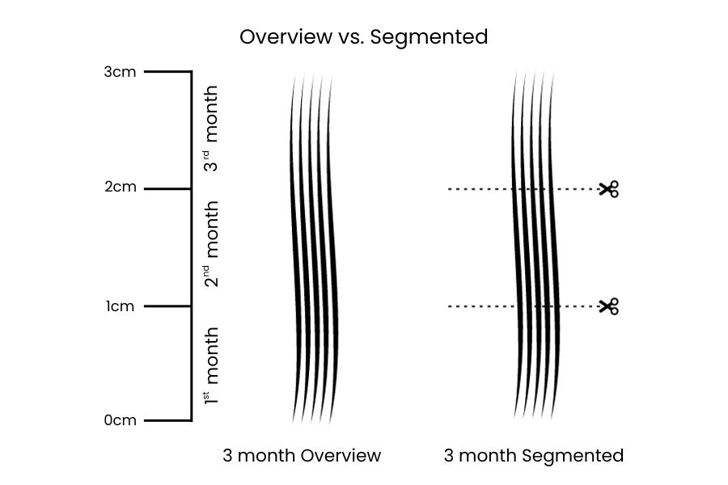Testing hair samples is a non-invasive method of checking an individual's history of drug or excessive alcohol use. It can provide a record over a longer period of time (months rather than days) than any other sample type such as blood, urine or oral fluid.
What are the benefits of hair testing?
The biggest benefits to using hair strand testing are:
- It allows retrospective testing over a number of months
- It can identify patterns and trends of substance use
- It is more difficult to ‘cheat’ a hair test
- Hair samples are quite stable and so can be easily stored
How far back can the testing go?
Head hair grows at an average rate of approximately one centimetre (cm) per month and as it grows, markers of drug and alcohol use are incorporated into the hair. This means that each centimetre of hair carries a record of approximately one month’s history of drug and alcohol use (or non-use). We can either analyse a single, longer section of hair to provide an ‘overview’ analysis; a maximum of 3cm can be included in one test which will provide an overview or average for that 3-month period. Alternatively we can carry out a ‘segmented’ analysis where the hair sample is cut into monthly 1-centimetre sections. This allows a month-by-month historic profile to be obtained.

The number of sections that can be tested will be dependent upon the length of sample available. If for example your client has 12cm of head hair, we could potentially look at the level of drug or alcohol use (or non-use) for the previous 12 months.
It is estimated to take approximately 5-7 days from the time of drug or alcohol use for head hair containing the markers to grow above the scalp and be available for cutting and analysis. It is recommended to wait at least three to four weeks following the suspected use of a drug before collection of a sample so that the period of use or exposure is included in the collected sample.
What if my client has no head hair?
If your client is bald or has shaved their head, we can look to use body hair as a sample. We can use most parts of the body to collect from, arm/leg hair, pubic hair, underarm and even beard hair. The biggest difference with body hair when compared to head hair is the time period of investigation. With head hair we can segment the hair into sections to give patterns and trends. This isn’t possible with body hair due to the growth pattern of the hair.
At Cellmark we follow international hair testing guidelines issued by The Society of Hair Testing (SoHT). The SoHT advises that head hair (rather than body hair) is the preferred type of hair as it has the most hairs in the ‘active’ growth phase.
Will my client be left with a bald patch?
We often get asked “Will my client be left with a bald patch on their head?” While we ask that your client is prepared for the appointment and aware of what will happen, our aim is to never leave a bald patch. We will usually take a hair sample which is the approximate diameter of a standard drinking straw from the crown of the head. This is the preferred area for sampling as it contains the highest percentage of actively growing hair. Hair from the rest of the head can also be used but may contain slightly more 'old' growth hair.
Whatever your clients’ situation, it is vital to work with a testing laboratory that will listen to your requirements and advise you of the best method given the circumstances. Cellmark has an experienced team of advisors on hand ready to guide you through the process.
Please call us on 0800 036 2522 or alternatively use our instant quote page to obtain a quotation for your testing needs.

